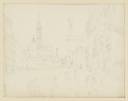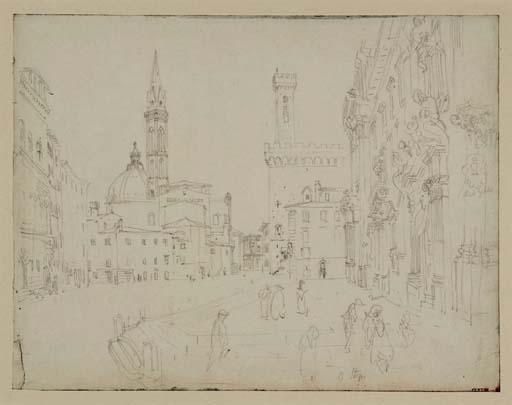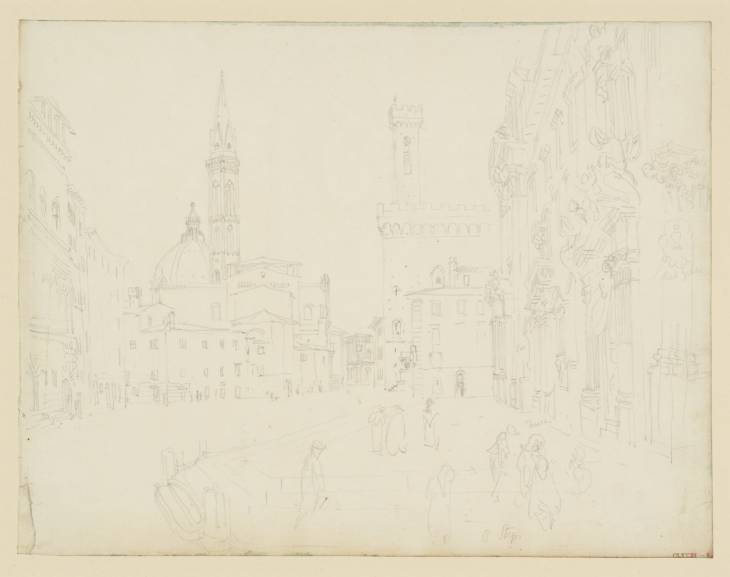Joseph Mallord William Turner Florence: The Piazza di San Firenze and Complesso di San Firenze, with the Bargello, Badia Fiorentina and Duomo Beyond 1819
Image 1 of 2
-
 Joseph Mallord William Turner, Florence: The Piazza di San Firenze and Complesso di San Firenze, with the Bargello, Badia Fiorentina and Duomo Beyond 1819
Joseph Mallord William Turner, Florence: The Piazza di San Firenze and Complesso di San Firenze, with the Bargello, Badia Fiorentina and Duomo Beyond 1819 -
 Joseph Mallord William Turner, Florence: The Piazza di San Firenze and Complesso di San Firenze, with the Bargello, Badia Fiorentina and Duomo Beyond 1819 (Enhanced image)Enhanced image
Joseph Mallord William Turner, Florence: The Piazza di San Firenze and Complesso di San Firenze, with the Bargello, Badia Fiorentina and Duomo Beyond 1819 (Enhanced image)Enhanced image
Joseph Mallord William Turner,
Florence: The Piazza di San Firenze and Complesso di San Firenze, with the Bargello, Badia Fiorentina and Duomo Beyond
1819
Joseph Mallord William Turner 1775–1851
Florence: The Piazza di San Firenze and Complesso di San Firenze, with the Bargello, Badia Fiorentina and Duomo Beyond 1819
D15259
Turner Bequest CLXXXI 8
Turner Bequest CLXXXI 8
Pencil on white wove paper, 224 x 289 mm
Inscribed by Turner in pencil ‘Red Gold’ centre right, on pilaster, ‘Tuscan’ below right of centre, below half-columns of doorway, and ‘8 Step’ towards bottom right
Inscribed by John Ruskin in red ink ‘8’ bottom right (now faint)
Stamped in black ‘CLXXXI – 8’ bottom right
Inscribed by Turner in pencil ‘Red Gold’ centre right, on pilaster, ‘Tuscan’ below right of centre, below half-columns of doorway, and ‘8 Step’ towards bottom right
Inscribed by John Ruskin in red ink ‘8’ bottom right (now faint)
Stamped in black ‘CLXXXI – 8’ bottom right
Accepted by the nation as part of the Turner Bequest 1856
Exhibition history
1981
Turner’s First Visit to Italy, 1819: Watercolours from the Turner Bequest, Loaned by the British Museum, Tate Gallery, London, April–October 1981 (no catalogue).
References
1909
A.J. Finberg, A Complete Inventory of the Drawings of the Turner Bequest, London 1909, vol.I, p.535, CLXXXI 8, as ‘Street Scene’.
Finberg subsequently annotated his generic 1909 Inventory title (‘Street Scene’) with ‘Florence. Badia (J.P.H)’;1 the initials are those of the etcher and collector John Postle Heseltine (1843–1929), whose occasional suggestions are noted in copies of the Inventory at Tate Britain. In another copy he simply noted ‘Florence’,2 while the Turner scholar C.F. Bell annotated a further copy: ‘Florence, the Piazza San Firenze with the towers of the Badia and Bargello and cupola of the Duomo’.3
The viewpoint is at the southern end of the irregular square, which widens half way along its western side before narrowing again. Ian Warrell has noted that the Complesso di San Firenze’s oratory is in the foreground,4 its Baroque façade encrusted with statues over the pedimented doorways at the near and far ends. The ornate capital to the right is a separate detail, as the steep perspective means that it would have been well outside the top right-hand corner relative to the main view. The plaque below it seems to be a temporary feature at the corner of the Borgo dei Greci; it is marked as being ‘Red Gold’, which Warrell has suggested as indicative of a Christmas decoration5 (see below).
At the centre in the distance the Via del Proconsolo recedes to the north, with the medieval tower of the Bargello (the Palazzo del Bargello or del Popolo) on the right, now an art museum noted for its Renaissance sculpture collection. The spire to the left is the Gothic campanile of the Badia Fiorentina abbey complex, directly opposite the Bargello’s tower, and at the far left is the heavily rusticated Renaissance façade of the Palazzo Gondi. Some 250 metres beyond the Badia and hence relatively inconspicuous from this angle is Brunelleschi’s vast early Renaissance dome over the crossing of Florence Cathedral (the Duomo). A later range of taller buildings towards the far end of the square mean that only the cupola is now clearly visible; Turner seems in any case to have placed it too high relative to the campanile.
In her Introduction to the Rome and Florence sketchbook, used towards the end of Turner’s first Italian tour, Nicola Moorby has noted that ‘appears to have stayed in Florence for around two weeks, departing in early January in order to resume his journey home’. He had made three detailed watercolours of the city and its setting6 for James Hakewill, based on the latter’s drawings prior to 1819 (see the Introduction to this tour). This is the only large-scale drawing of the city he made during his first visit, most of his extensive survey of Florence, its surroundings and artworks being in the smaller Rome and Florence book (between Tate D16543–D16627, D16640; Turner Bequest CXCI 31–84, 91a). He returned on his 1828–9 tour, using the Genoa and Florence sketchbook (Tate; Turner Bequest CCXXXIII), but none of his later watercolours7 made use of it. See also Tate D25138, D27539, D27612 and D27673 (Turner Bequest CCLXIII 16, CCLXXX 22, 95, 156).
Ian Warrell has noted the widespread availability of prints of Florence after the local artist Giuseppe Zocchi (1711–1767);8 a drawing north from a viewpoint in the middle of the square is in the Morgan Library & Museum, New York, for example, although any similarity is likely fortuitous. This is the only whole-page pencil drawing in this sketchbook, the preceding pages having been taken up with watercolour views of Lake Como, Milan and Venice, encountered much earlier in the tour, as discussed in the Introduction.
Undated MS note by A.J. Finberg (died 1939) in interleaved copy of Finberg 1909, Tate Britain Prints and Drawings Room, I, p.535.
Undated MS note by Finberg in copy of Finberg 1909, Tate Britain Prints and Drawings Room, I, p.535.
Undated MS note by C.F. Bell (died 1966) in copy of Finberg 1909, Tate Britain Prints and Drawings Room, I, p.535.
Technical notes:
The drawing was made within the Como and Venice sketchbook, the first eight leaves of which where mounted in 1935 (see the book’s Introduction); all of them were trimmed slightly irregularly at the gutter on the left, with the edges of the stitching holes being evident here and there. As noted by Ian Warrell, there is are traces of blue pigment along the top edge, presumably offset from the wash used for the sky on a previous page1 (likely D15256 or D15257; Turner Bequest CLXXXI 6, 7).
Verso:
Blank; stamped in black with Turner Bequest monogram over ‘CLXXXI – 8’ bottom left.
Matthew Imms
March 2017
How to cite
Matthew Imms, ‘Florence: The Piazza di San Firenze and Complesso di San Firenze, with the Bargello, Badia Fiorentina and Duomo Beyond 1819 by Joseph Mallord William Turner’, catalogue entry, March 2017, in David Blayney Brown (ed.), J.M.W. Turner: Sketchbooks, Drawings and Watercolours, Tate Research Publication, July 2017, https://www

